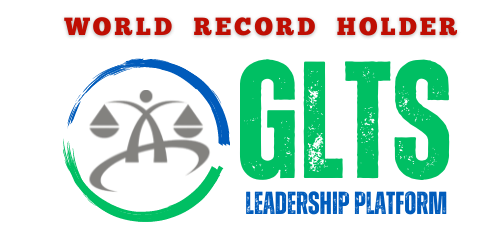Home care for the patients suspected with coronavirus
COVID-19 is spread by droplets released by infected people when they sneeze or cough. This is why self-isolation within the home is so important. Once one person in the home is infected it’s important for the rest of the household to stay indoor and avoid contact with anyone else.
For those presenting with mild illness, hospitalization may not be possible because of the burden on the health care system, or required unless there is concern about rapid deterioration.If there are patients with only mild illness,providing care at home may be considered, as long as they can be followed up and cared for by family members. Home care may also be considered when inpatient care is unavailable or unsafe (e.g. capacity is limited, and resources are unable to meet the demand for health care services).
Patients and household members should be educated about personal hygiene, basic IPC measures, and how to care as safely as possible for the person suspected of having COVID-19 to prevent the infection from spreading to household contacts. The patient and household members should be provided with ongoing support and education, and monitoring should continue for the duration of home care. Household members should adhere to the following recommendations.
Someone with Covid-19 symptoms should stay in a well-ventilated single room with open windows and an open door. They should avoid using shared spaces wherever possible, and bathrooms and kitchens should be well ventilated.
Other members of the household should stay in a different room or, if that is not possible, maintain a distance of at least 1 metre or 3 feet from the ill person and sleep in a separate bed.One member of the household, who is in good health with no underlying chronic medical conditions, should take on the role of caregiver – no one else should visit the patient until they are symptom-free.
Caregivers should wash their hands with soapy water after every contact with the patient, as well as before and after preparing food, before eating, after using the toilet, and whenever hands look dirty.If hands are not visibly dirty, 60% alcohol-based hand rub can be used. For visibly dirty hands, use soap and water.After washing hands with soap and water it is preferable to use disposable paper towels to dry them. If these are not available, use clean cloth towels and replace them frequently.
To contain respiratory secretions, a medical mask should be provided to the patient and worn as much as possible, and changed daily.Individuals who cannot tolerate a medical mask should use rigorous respiratory hygiene; that is, the mouth and nose should be covered with a disposable paper tissue when coughing or sneezing. Materials used to cover the mouth and noseshould be discarded or cleaned appropriately after use (e.g. wash handkerchiefs using regular soap or detergent and water).
Both the ill person and the caregiver should wear medical masks.If the mask gets wet or dirty from secretions, it must be replaced immediately with a new clean, dry mask.Remove the mask using the appropriate technique – that is, do not touch the front, but instead untie it. Discard the mask immediately after use and perform hand hygiene.Avoid direct contact with body fluids, particularly oral or respiratory secretions, and stool. Use disposable gloves and a mask when providing oral or respiratory care and when handling stool, urine, and other waste. Perform hand hygiene before and after removing gloves and the mask.Do not reuse masks or gloves.
Any surfaces and objects that have been touched by the sick person should be cleaned and disinfected at least daily. It’s thought coronavirus can survive on hard surfaces for up to 72 hours. The US Centers for Disease Control and Prevention has produced a detailed guide to disinfection in the home.
Daily clean and disinfect surfaces that are frequently touched in the room where the patient is being cared for,such as bedside tables, bedframes, and other bedroom furniture. Regular household soap or detergent should be used first for cleaning, and then, after rinsing, regular household disinfectant containing 0.1% sodium hypochlorite (i.e. equivalent to 1000 ppm) should be applied.
Caregivers should clean and disinfect bathroom and toilet surfaces at least once daily. Regular household soap or detergent should be used first for cleaning, and then, after rinsing, regular household disinfectant containing 0.1% sodium hypochlorite should be applied. Clean the patient’s clothes, bed linen, and bath and hand towels using regular laundry soap and water or machine wash at 60–90 °C (140–194 °F) with common household detergent, and dry thoroughly. Place contaminated linen into a laundry bag. Do not shake soiled laundry and avoid contaminated materials coming into contact with skin and clothes.Gloves and protective clothing (e.g. plastic aprons) should be used when cleaning surfaces or handling clothing or linen soiled with body fluids. Depending on the context, either utility or single-use gloves can be used. After use, utility gloves should be cleaned with soap and water and decontaminated with 0.1% sodium hypochlorite solution. Single-use gloves (e.g. nitrile or latex) should be discarded after each use. Perform hand hygiene before putting on and after removing gloves.
Gloves, masks, and other waste generated during home care should be placed into a waste bin with a lid in the patient’s room before disposing of it as infectious waste.The onus of disposal of infectious waste resides with the local sanitary authority.
Avoid other types of exposure to contaminated items from the patient’s immediate environment (e.g. do not share toothbrushes, cigarettes, eating utensils, dishes, drinks, towels, washcloths, or bed linen).
The sick person should use separate cups, dishes, utensils, towels and bed linen to the rest of the household. And all these items should be washed separately using
soap and water.The patient should gargle with lukewarm water 6-7 times a day. The patient should eat nutritious foods and plenty of vitamin C-rich fruits. Such as: Lemon, Lemon Syrup, Orange, Amalki, Guava, Pineapple, pomegranate .Also the patient should drink enough water to avoid dehydration and drink tea in the morning and afternoon with ginger every day.
Coronavirus is a serious issue that is causing unprecedented problems in many countries. However, you must bear in mind that for the vast majority, Coronavirus COVID-19 is mild and people recover from it within 5-7 days.
Listening to music, reading books, communicating with friends by phone, messenger to have a good time without panicking at home will keep the mind cheerful. Breathing exercise should be done everyday.Breastfeeding mothers can continue to feed their babies but should wear a mask when near the baby.
Monitoring a patient’s symptoms is vital. For some people, the virus will have only mild effects. But in serious cases it can cause pneumonia . It’s the moment many people fear – someone in any household begins to show symptoms of coronavirus. The World Health Organization (WHO) recommends that anyone with a fever, cough and difficulty breathing should seek medical attention and contact with local health authority.
SHUVRADEB HALDER, Deputy Zone Leader, Dhaka, Bangladesh, #GLTS
Medical Student
Popular Medical College, Dhaka
Mobile no:01753667866



No responses yet